Few arachnids are as stunning as the Brazilian Jewel tarantula. With its vibrant colors and mild temperament, it is an excellent choice if you want to keep a calm spider pet.
In this guide, I will take you through some interesting facts about Brazilian Jewel tarantula. Whether you are looking for information about its mating habits, diet, or temperament, you’ve come to the right place.
Without further ado, let’s dive in and learn more about the famous Brazilian Jewel Tarantula.
1. Scientific Classification
The Brazilian Jewel tarantula is scientifically known as Typhochlaena seladonia or T. seladonia. It also goes by other endearing names such as Candy Shop spider and Jewel Toe spider.
This tarantula is extremely rare and obtains its name from its colorful appearance.
Its natural habitat is in the rainforests of Sergipe and Babia in Brazil.
2. Appearance
The Brazilian Jewel is crowed as the most colorful and beautiful new world tarantula, making it a popular choice among hobbyists.
Different species come in different colors. At any given time, the tarantula can have as many as five colors on the different parts of its body.
Common colors found on a T. seladonia include distinctive pink, black and yellow. Others may have hues of reds, blues, oranges, greys, and everything in between.
The bulbous abdomen combined with the vibrant colors make this tarantula quite attractive.
3. Setae
Like most New World tarantulas, the Candy Shop tarantula is covered in long and short hairs known as setae or urticating hairs.
The hair coverings give this tarantula species a neat, streamlined outline compared to other species, which may appear shaggy and unkempt. This further adds to the beauty of the Brazilian Jewel.
Male T. seladonia are covered in more and longer setae than their female counterparts.
4. Molting
The Jewel Toe tarantula sheds its exoskeleton as part of its growth process. The shedding process is known as molting.
Young T. seladonia can molt several times a year as they grow rapidly. Once they become mature, molting reduces to just once a year.
Unlike Old World tarantulas, this New World species grows urticating hairs each time it molts. As is customary, the giant spider will stop eating and will become lethargic during the molting process.
5. Size
The Brazilian Jewel is an exceptionally small tarantula when compared to other tarantula species. In fact, it is categorized as a dwarf among the tarantula species.
While some tarantulas, such as the Cobalt Blue, have a leg span of up to 6 inches. A Candy Shop tarantula’s leg span is only 2.5 inches for females and only 2 inches for males.
Male T. seladonia have a small abdomen and small legs, giving them a distinctive appearance.
Unlike many other tarantula species, the T. seladonia has an average to slow growth rate. This explains why even adults have quite small bodies. Still, this small size means they can become adults in a relatively short time.
6. Habitat
The Candy Shop Spider’s natural habitat is the barks of the rainforest trees in Brazil. The species can be captured and brought up in captivity as a pet.
Like most other New World tarantulas, the T. seladonia species do not spin webs and rely on its trapdoor-making mechanism to capture its prey.
Some rare variations of the Brazilian Jewel, which live inside trees and tunnels, usually spin intricate webs to capture their prey.
In some countries, keeping Brazilian Jewel in captivity and collecting it as a hobby is prohibited.
Check the rules in your country about the domestication of exotic wild animals before keeping this spider as a pet.
7. Arboreal Species
The Brazilian Jewel is an arboreal or tree-dwelling species. It is well adapted to this habitat with its thin body and relatively long legs.
As part of their arboreal adaptation, these giant tarantulas have flatter legs and thick hairs on their tarsi and metatarsi, the last two parts of their legs.
The bigger surface area of their legs allows them to easily climb any surface and collect the materials they need to build their trap doors.
Their small stature and light weight give the Jewel Toe tarantula increased agility and protect them from extreme harm when they fall.
Some types of Brazilian Jewels live on tree bark and leaves. Others find refuge deep inside tree hollows created by other insects or birds. Some live in low vegetation in bushes and tall grasses.
8. Defense Mechanism
As a New World species, Brazilian Jewel tarantula uses their urticating hairs as their primary means of defense.
These spiders generally do not have a venomous bite; the bite is not a threat to humans, but it can be quite painful.
This species would rather back off and retreat to its burrow or behind its trapdoor than attack a transgressor.
But, when faced with a persistent threat, the T. seladonia will use its urticating hairs to defend itself. The hairs can cause numbness and irritation in humans.
Hair flicking attacks by this species are rare. These attacks may only occur when the tarantula feels extremely cornered and has nowhere to hide.
After flicking its hairs, the tarantula will have a bald spot around its abdominal areas where the hairs have been released.
9. Trap Door Species
The Brazilian Jewel tarantula is a trap door species. It is known for its ability to create camouflaged trapdoors as part of its hunting strategy.
The tarantula will cut small pieces of organic matter, including plants, leaves, and barks, to construct the door. They then use this material to progressively build an elaborate door on the surface of the tree.
The tarantula hides behind the trap door and lays in wait for its prey to pass by. In addition to dwelling in trees, the tarantula can establish a habitat close to the earth if it means easy access to food.
The Brazilian Jewel will also use its own silk to create a trap for its prey. The tarantula operates its silk trap behind the trapdoor and ambushes any prey that gets close to it.
Once the giant spider captures its prey, it quickly scurries behind the trapdoor from where it leisurely feasts on its hunt.
seladonia also constructs trapdoors in captivity, which it uses to camouflage itself too. This makes it quite the docile tarantula as it hides behind the trapdoor much of the time and will only come out to eat.
10. Display In Captivity
The Brazilian Jewel may be the most beautiful among all the tarantula species, but it might not be a great choice for display.
Although this tarantula is not as aggressive or defensive in captivity, its docile nature takes away points and makes it a less desirable pet.
The T. seladonia hides behind its trapdoor the majority of the time. If you are looking for a tarantula you can proudly display, this one might not be due to this hiding behavior combined with its small size.
11. Temperament
The Brazilian Jewel has a calm and friendly disposition, making it a suitable pet if you do not mind its docility.
When faced with an imminent threat, the species will scurry behind its trapdoor instead of putting up a fight.
Unlike other species that use hair flicking as a defense mechanism, this tarantula does not always flick hair despite urticating hairs. It also rarely ever bites.
It is a dormant and friendly species, but it is not recommended for beginners. It is best not to handle this spider without the supervision of a more experienced hobbyist.
12. Housing
When kept as a pet, the Brazilian Jewel’s trapdoor-making behavior must be considered.
There should be enough space and suitable material in the enclosure where the spider is kept to mimic its natural habitat as closely as possible.
13. Diet
Despite its size, the T. seladonia is a big eater. It lacks sophisticated hunting skills and instead depends on simply ambushing its prey when the critters come close enough to the tarantula’s trap door.
Its diet mainly consists of small crickets and fruit fly. This tarantula should not be fed large-sized prey that could potentially attack or harm the spider in captivity.
In captivity, this species needs to be fed at least twice a week for optimal growth.
14. Digestive System
The Brazilian Jewel’s mouth is located on the front lower part of the prosoma and right underneath the chelicare.
In line with the tarantula’s small size, the mouth is short and designed to only suck. As such, its prey must be liquidized before the giant spider digs into the feast.
In the wild, this tarantula opts to crush and predigest chunkier foods to make digestion easier.
In captivity, extracting juices from the chelicerae and spraying them on the prey can also help the tarantula digest them.
The tarantula’s stomach runs the entire length of the arachnid’s body. The tube widens in the prosoma and acts as the sucking stomach.
When the muscles of the sucking stomach contract, the size of the stomach increases. This action causes a powerful sucking mechanism, enabling the tarantula to drink its liquid or semi-solid prey.
When the food enters the intestines, the usual process of assimilation and distribution takes place. The food then passes through the intestine walls into the bloodstream for distribution.
15. Health Concerns
Jewel Toe spiders are generally healthy species with few genetic concerns.
As long as the conditions in their enclosure are healthy, the species can live out its entire lifespan even in captivity.
Pet T. seladonia are, however, prone to dehydration. Enough water should be provided when the species is held in captivity.
Without the materials and optimal conditions for creating trapdoors, the Candy Shop spider cannot hunt properly, resulting in death and malnutrition.
16. Optimal environment
The Brazilian Jewel tarantula needs high levels of humidity ranging between 70 and 85%. In captivity, the enclosure should be properly ventilated.
This tarantula survives best in temperatures ranging between 26-30OC in summer and 20-24OC in winter.
17. Reproduction
A mature male species interested in mating will first rub its abdomen on a surface to release semen.
It then dips its shorter leg appendages into the semen. The appendages, also known as pedipalps, will retain the semen until the male can find a suitable mating partner.
When the male detects a female, they both exchange signals, communicating that they are of the same species.
If the female Brazilian Jewel tarantula is receptive, the male inserts his semen-soaked pedipalps into a pouch on the female’s abdomen.
The male usually leaves as soon as the process is completed. Although rare, some female T. seladonia end up eating up their male partners.
The females can lay up to 2000 eggs. They do so in a silk sac and protect it for 6-7 weeks.
The young Brazilian Jewel will stay in the nest for a while. Before dispersing and becoming independent, the young ones will eat the remainder of the yolk sac.
Summary: Facts About Brazilian Jewel Tarantula
Tarantulas can make for great pets, but the Brazilian Jewel takes the crown. This arachnid is gorgeous with its multiple, vibrant colors and structured body.
It is illegal to keep this spider in captivity in some countries; you should check with your country to ensure you are safe domesticating this tarantula.
I hope you find this guide on facts about Brazilian Jewel tarantula helpful, whether you are looking to adopt it or satisfy your curiosity.
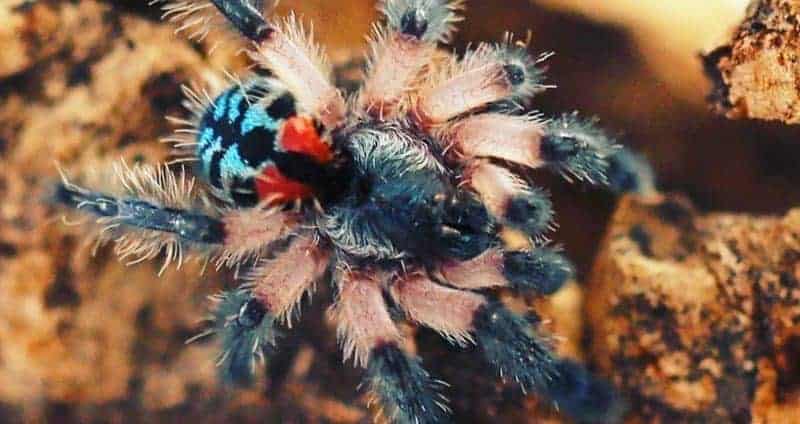
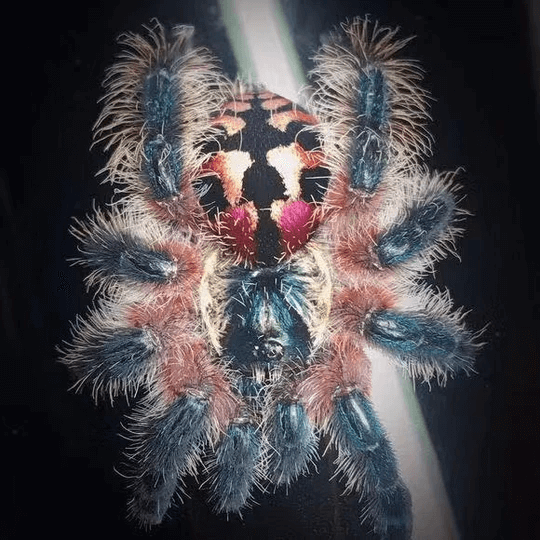
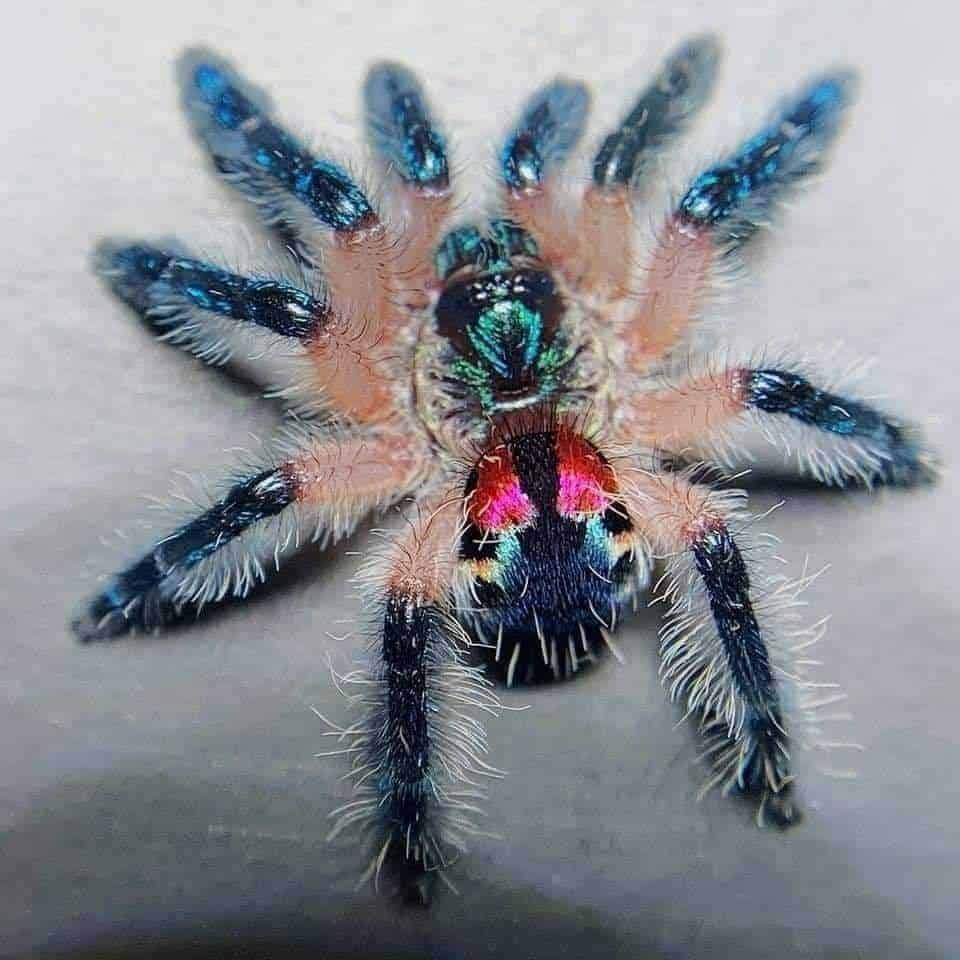
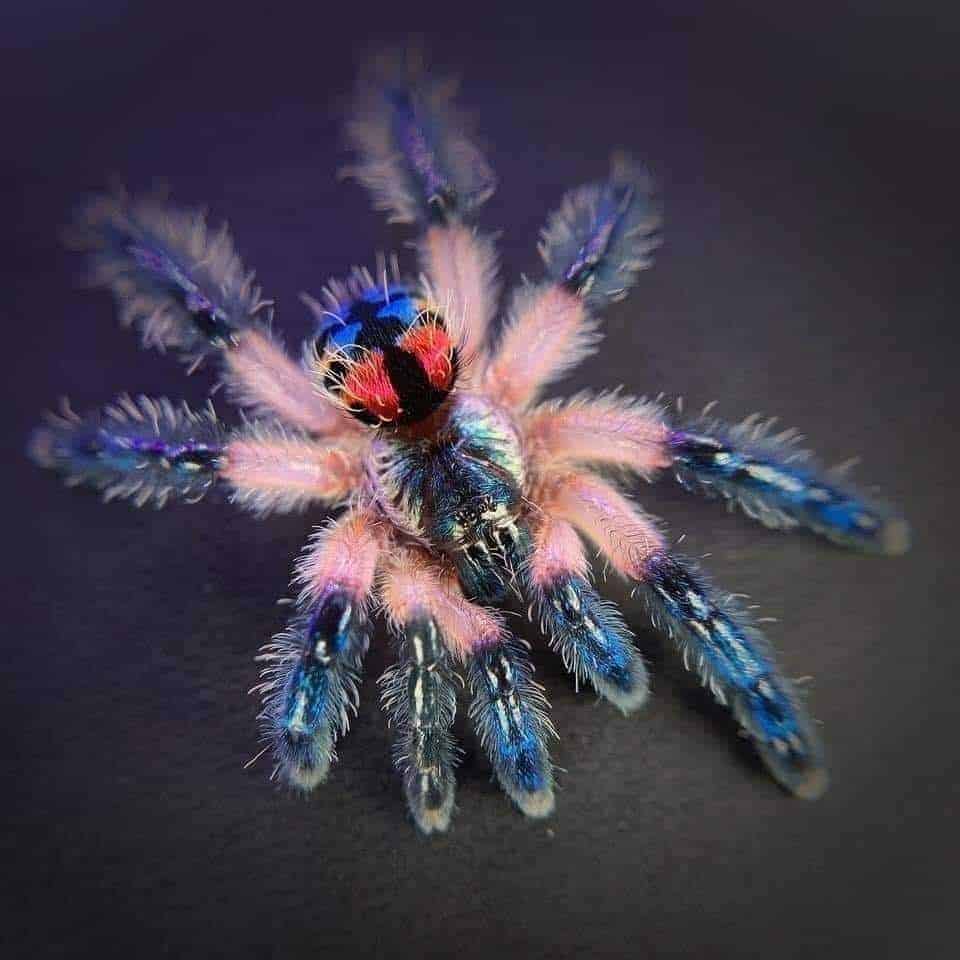
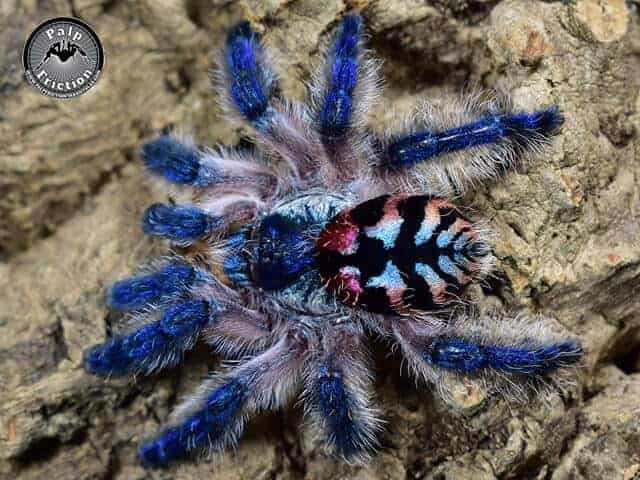
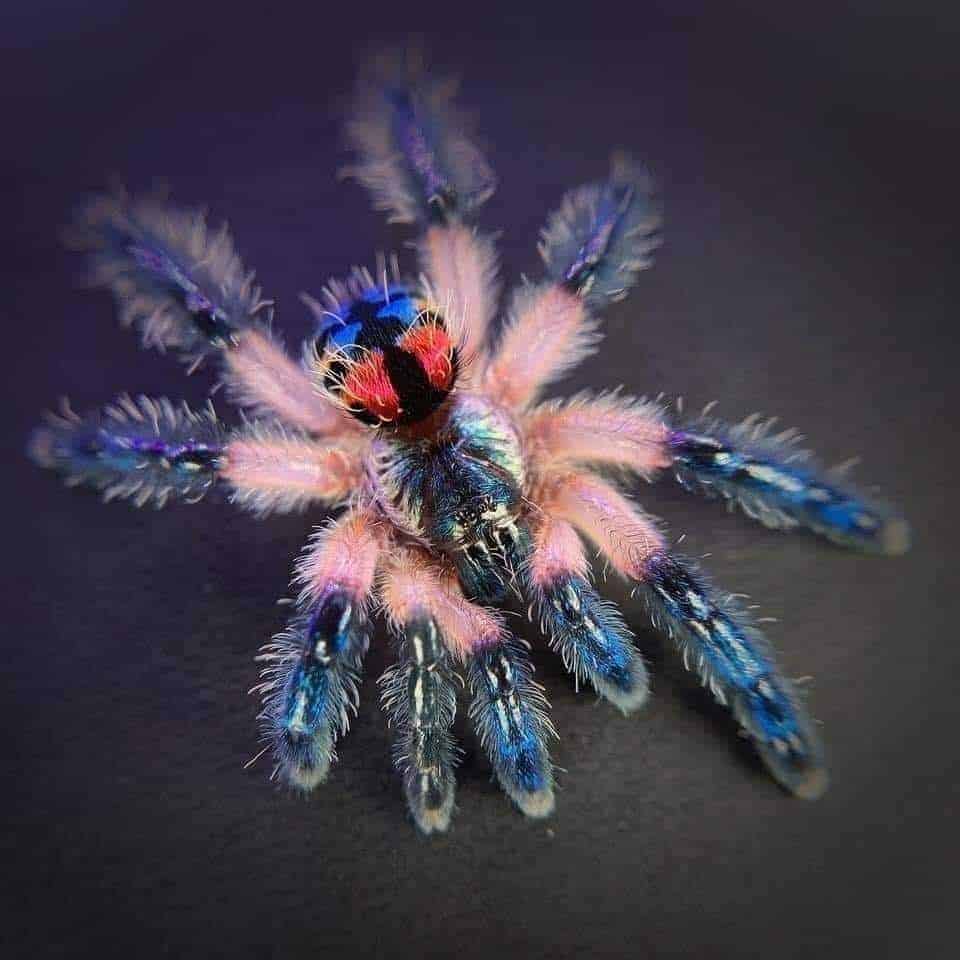
You guys are way off on so many things. I was the first to breed this species in the US. In fact you used one of my photos. I have never seen over 55 spiderlings. Some tarantulas may drop 1000 eggs but this is certainly not one of them lol
Hi! I just bought one at the Phoenix reptile expo. Is love some tips from an expert! Gorgeous species!
Danica
You happen to still be breeding these guys? I have been looking to raise a few dwarf species. How would they in a communal tree setting? They are stunning. email me back please, especially if you have some for sale. Thanks